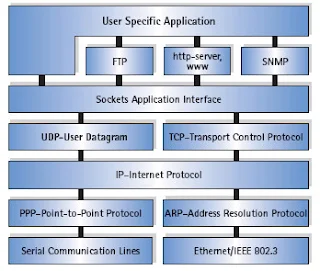 TCP/IP Architecture and the TCP/IP Model
TCP/IP Architecture and the TCP/IP ModelThe OSI reference model consists of seven layers that represent a functional division of the tasks required to implement a network. It is a conceptual tool that I often use to show how various protocols and technologies fit together to implement networks. However, it's not the only networking model that attempts to divide tasks into layers and components. The TCP/IP protocol suite was in fact created before the OSI Reference Model; as such, its inventors didn't use the OSI model to explain TCP/IP architecture (even though the OSI model is often used in TCP/IP discussions today, as you will see in this Guide, believe me.)
The TCP/IP Model
The developers of the TCP/IP protocol suite created their own architectural model to help describe its components and functions. This model goes by different names, including the TCP/IP model, the DARPA model (after the agency that was largely responsible for developing TCP/IP) and the DOD model (after the United States Department of Defense, the “D” in “DARPA”). I just call it the TCP/IP model since this seems the simplest designation for modern times.
Regardless of the model you use to represent the function of a network—and regardless of what you call that model!—the functions that the model represents are pretty much the same. This means that the TCP/IP and the OSI models are really quite similar in nature even if they don't carve up the network functionality pie in precisely the same way. There is a fairly natural correspondence between the TCP/IP and OSI layers, it just isn't always a “one-to-one” relationship. Since the OSI model is used so widely, it is common to explain the TCP/IP architecture both in terms of the TCP/IP layers and the corresponding OSI layers, and that's what I will now do.

No comments:
Post a Comment